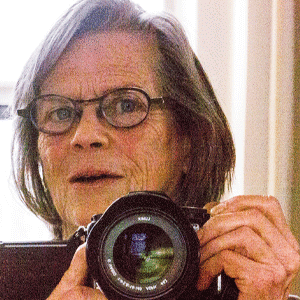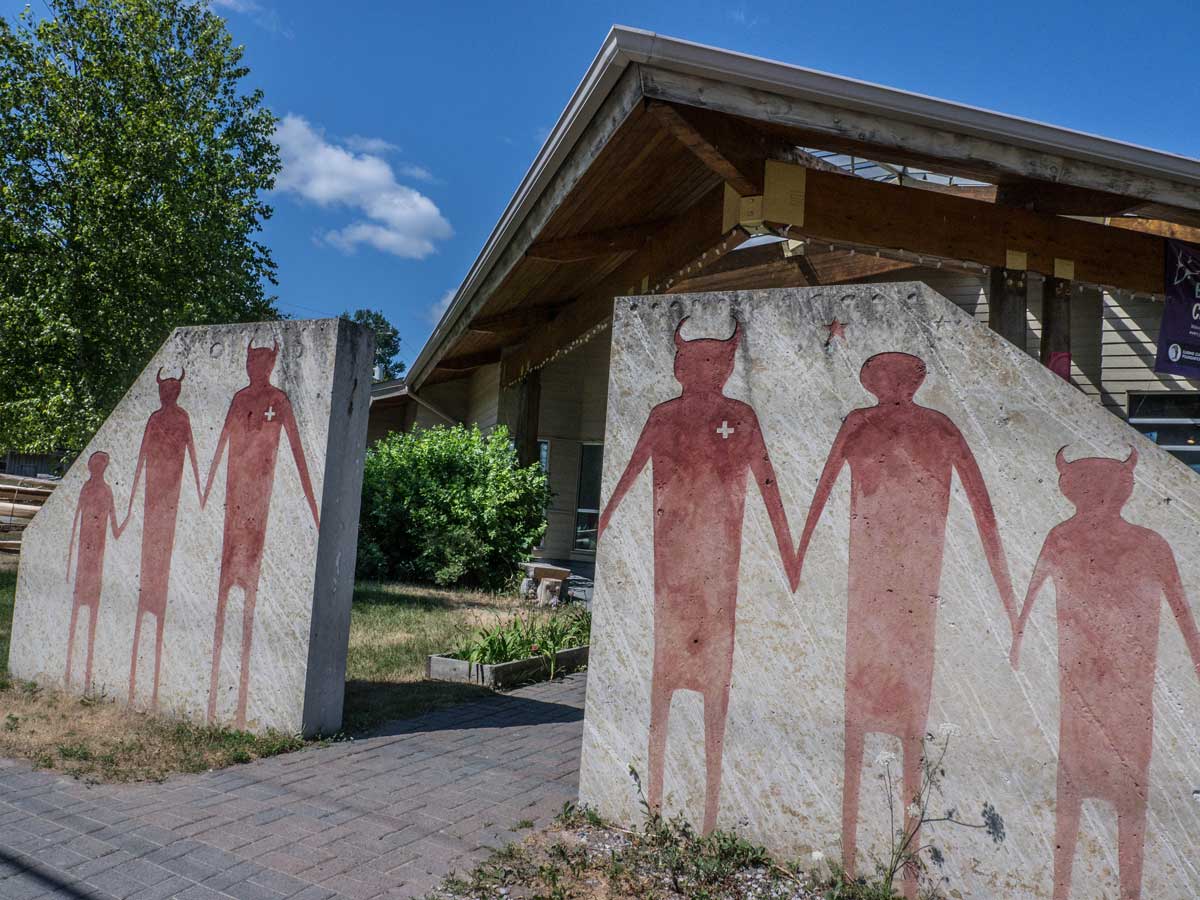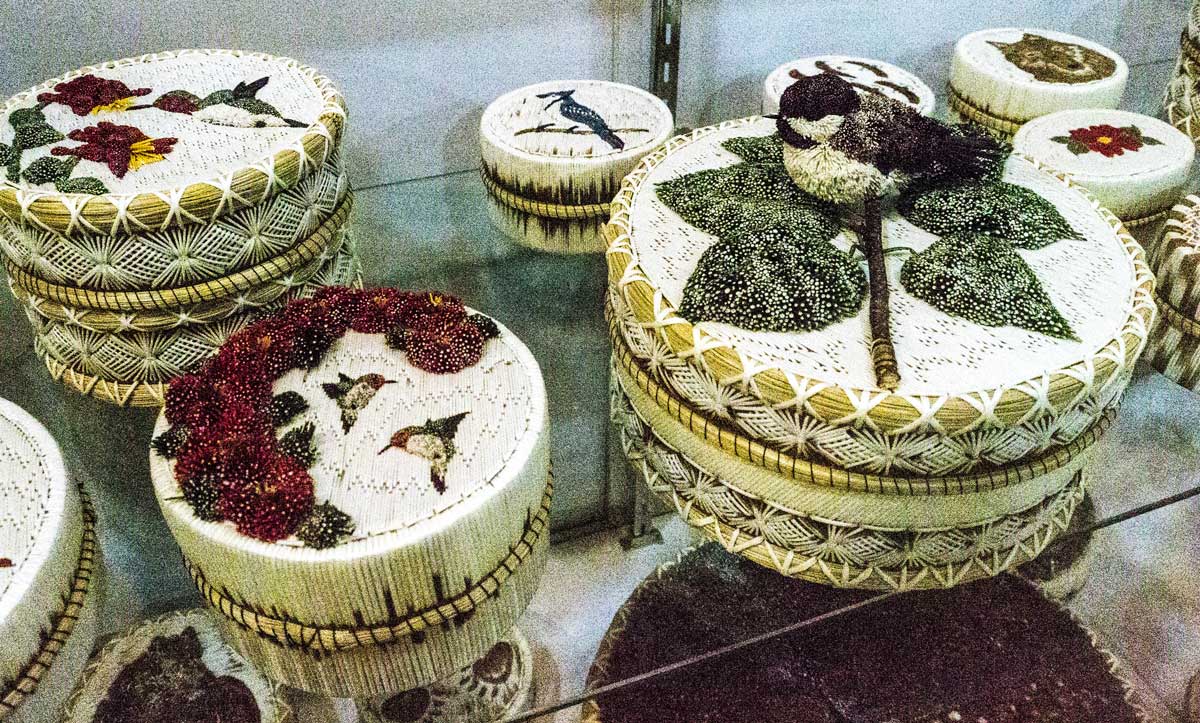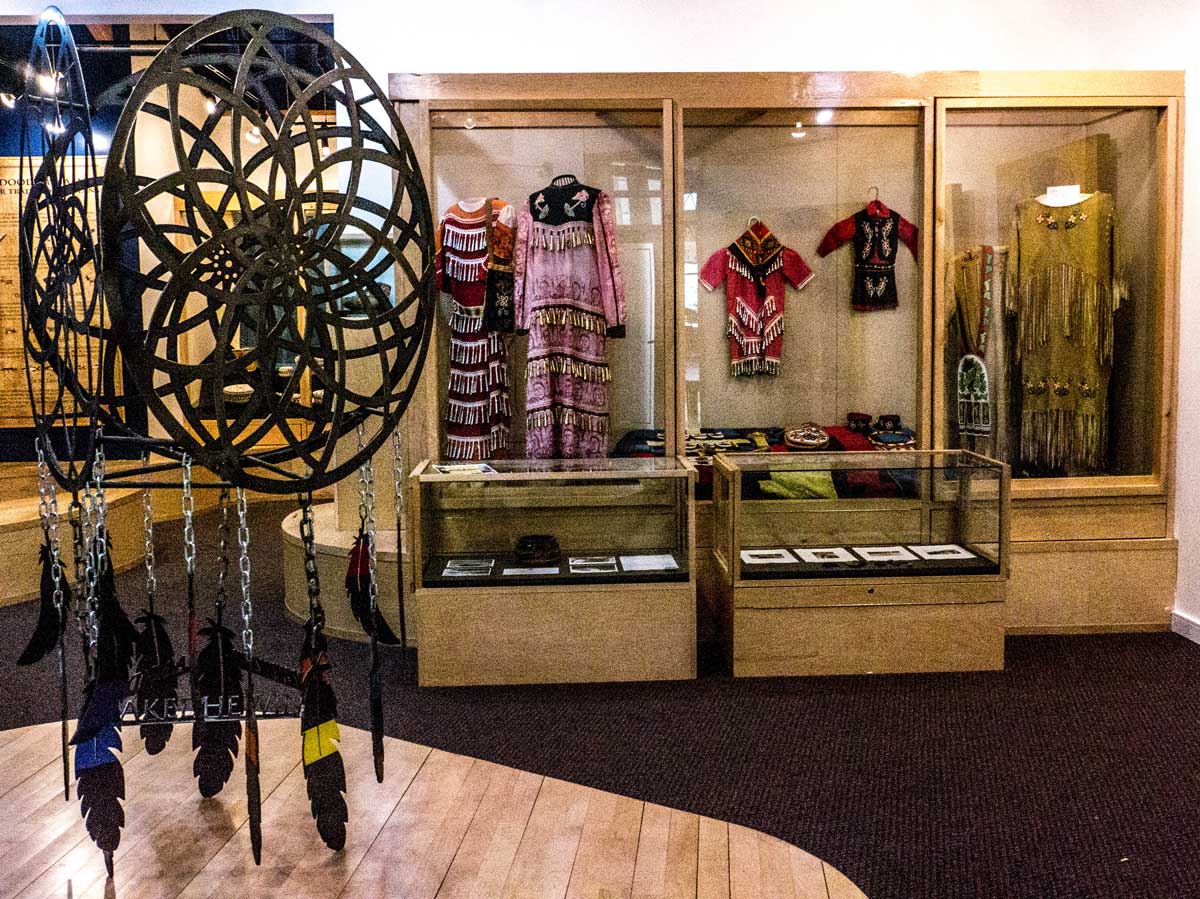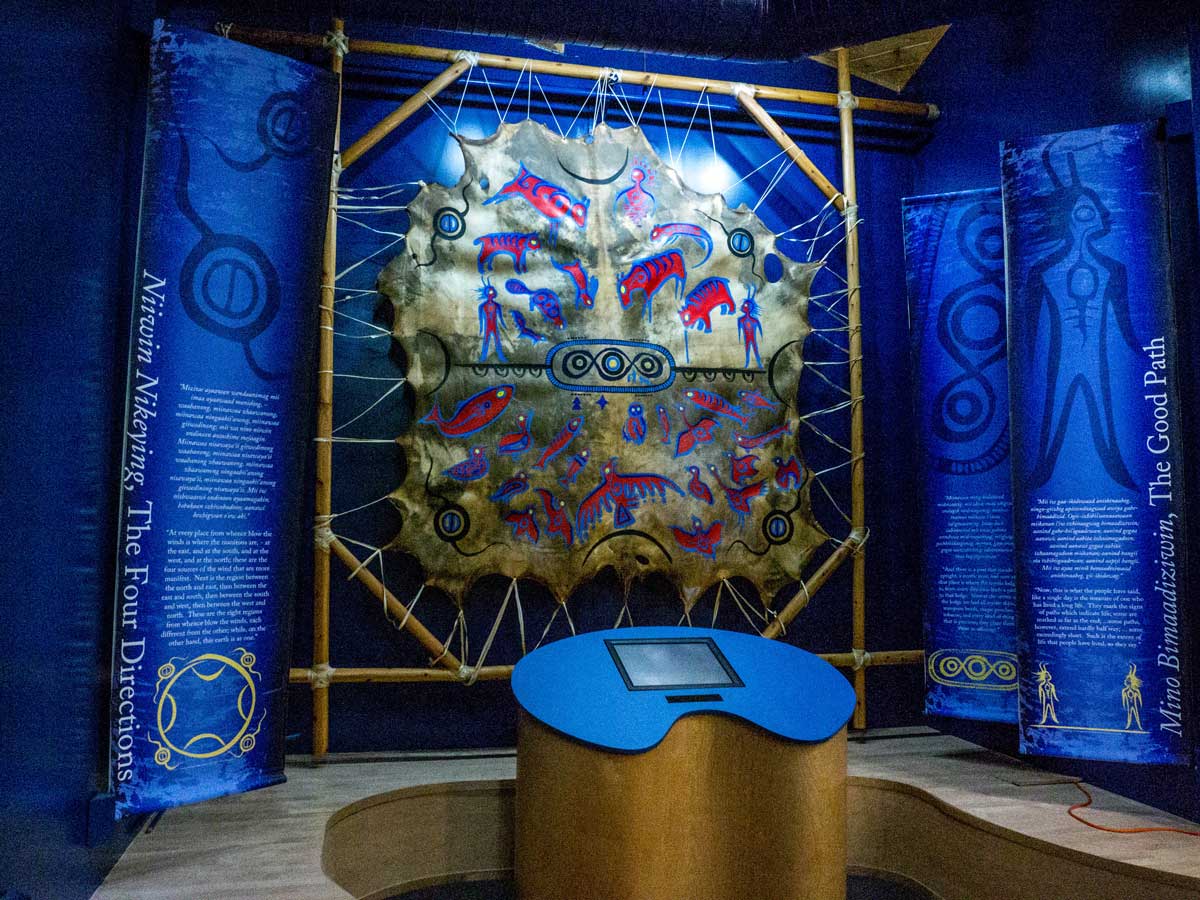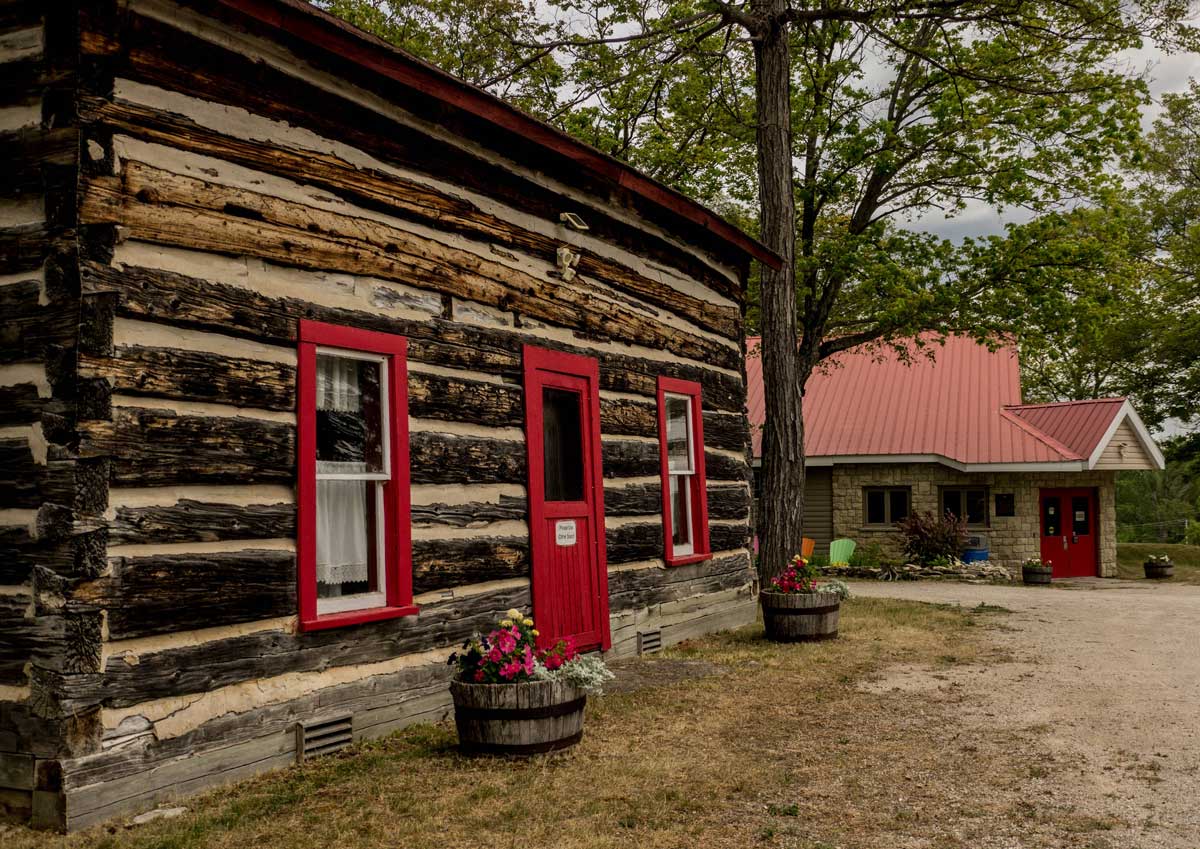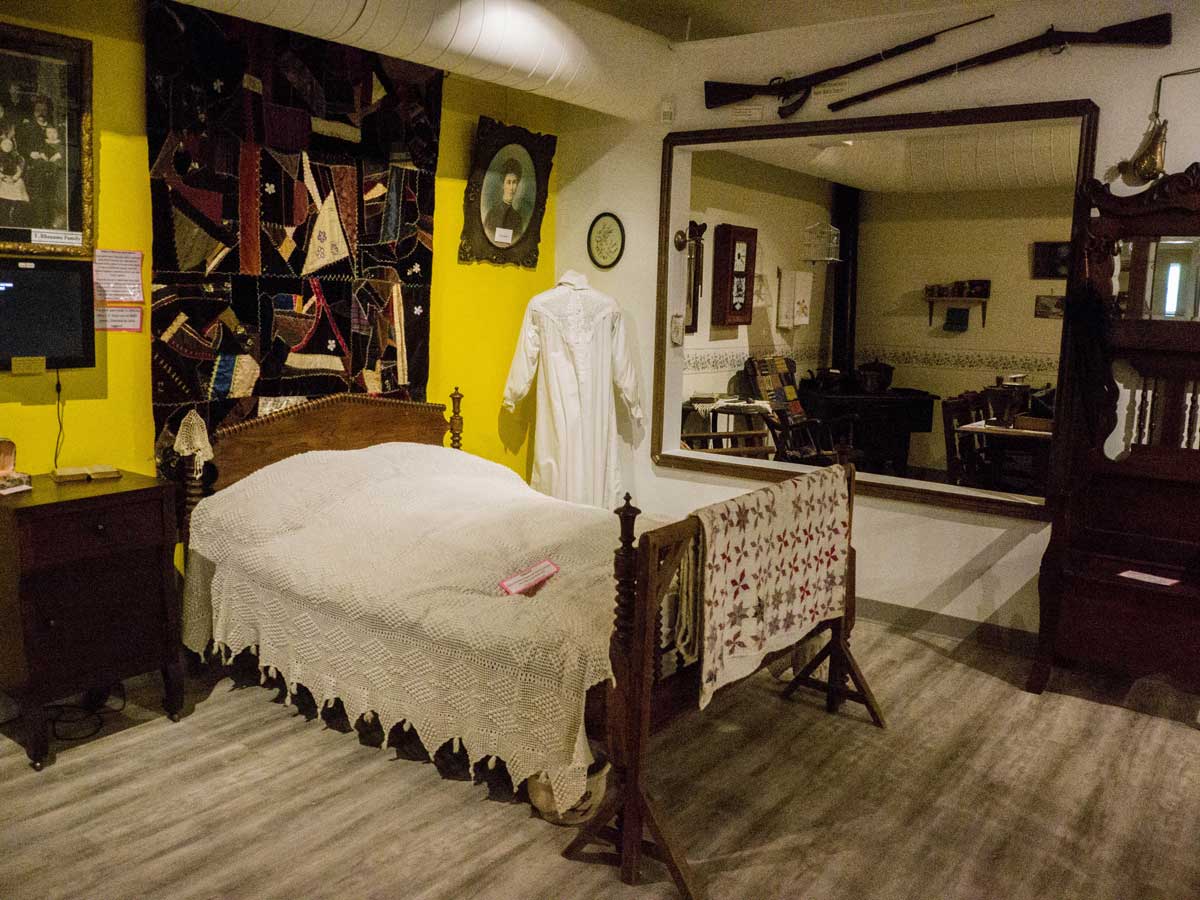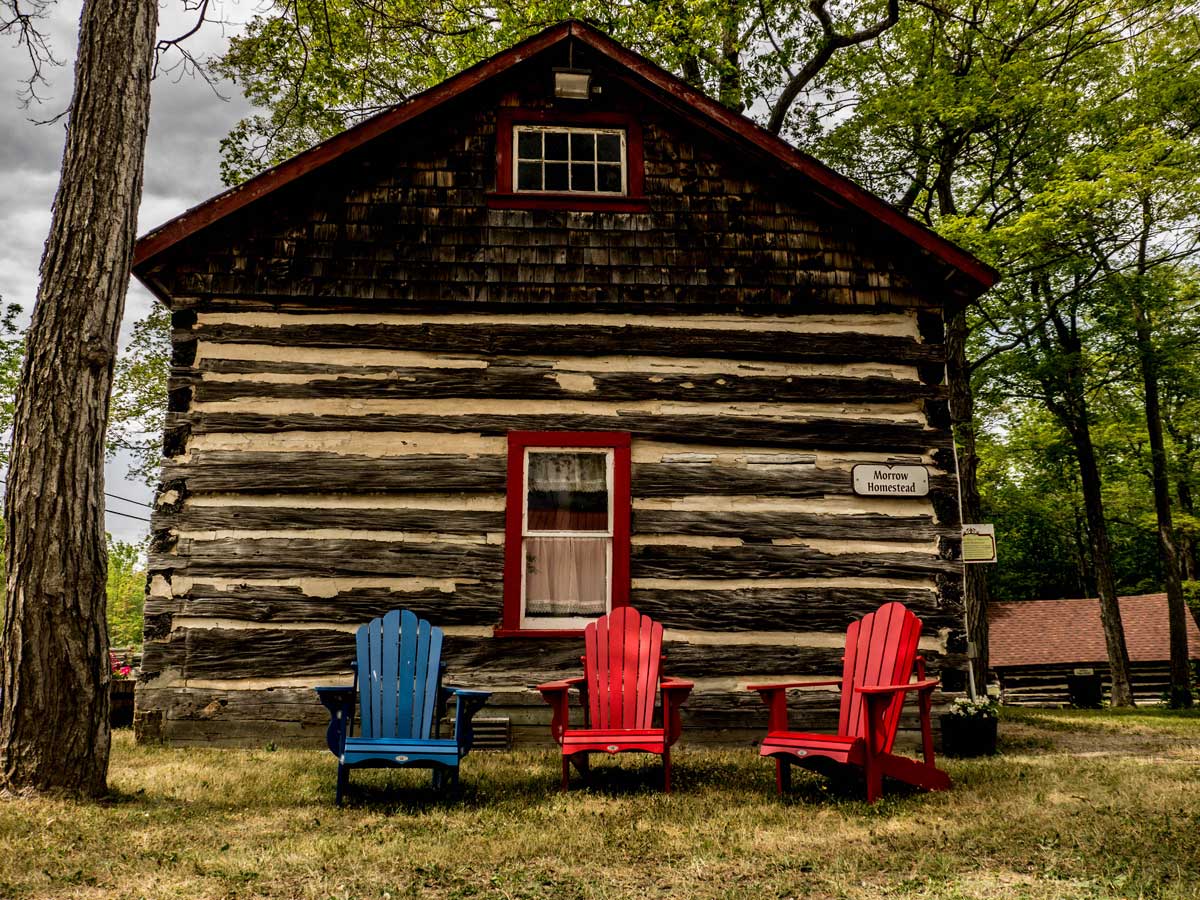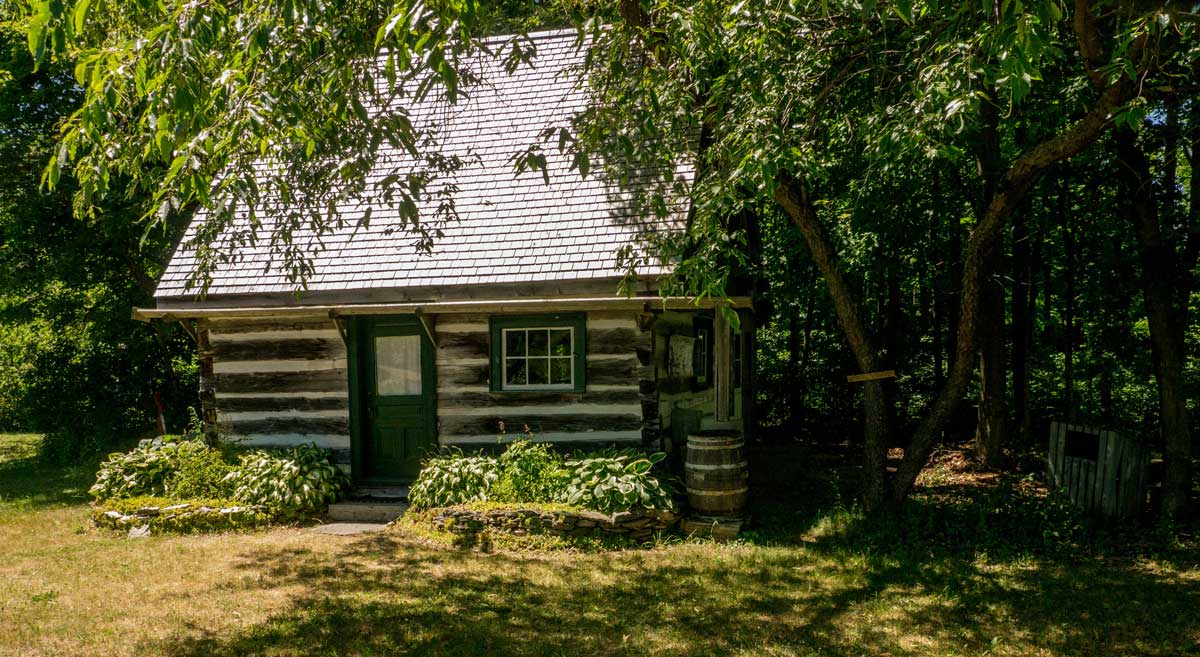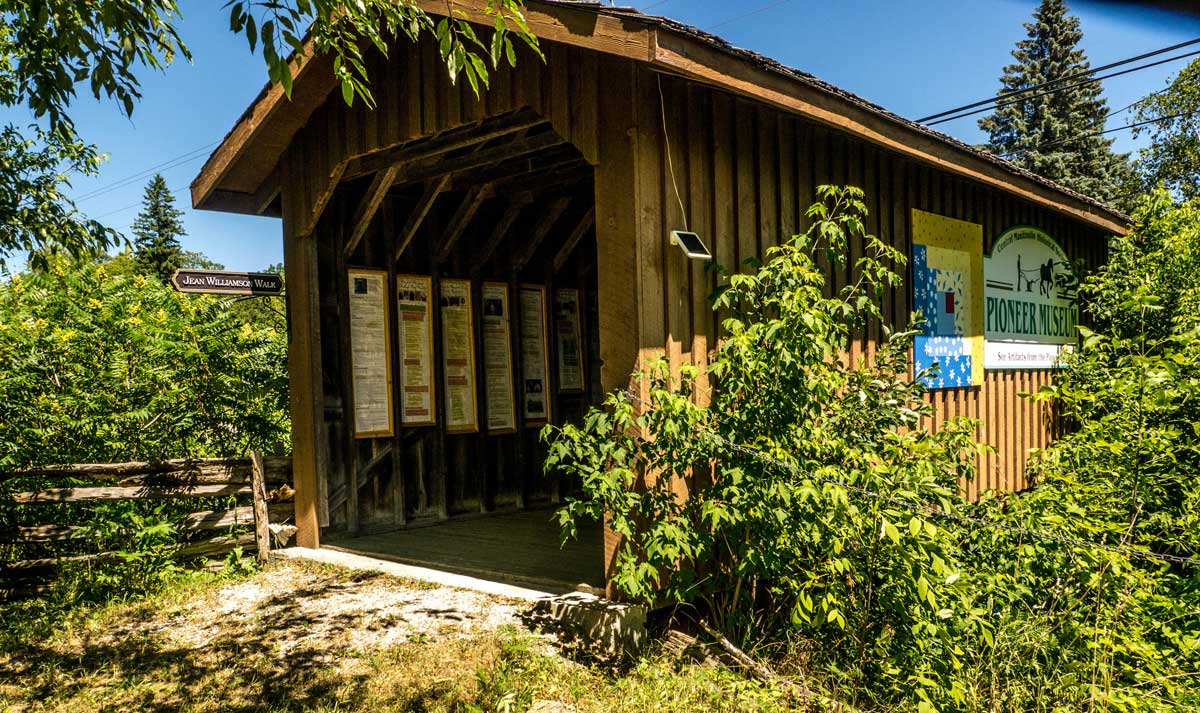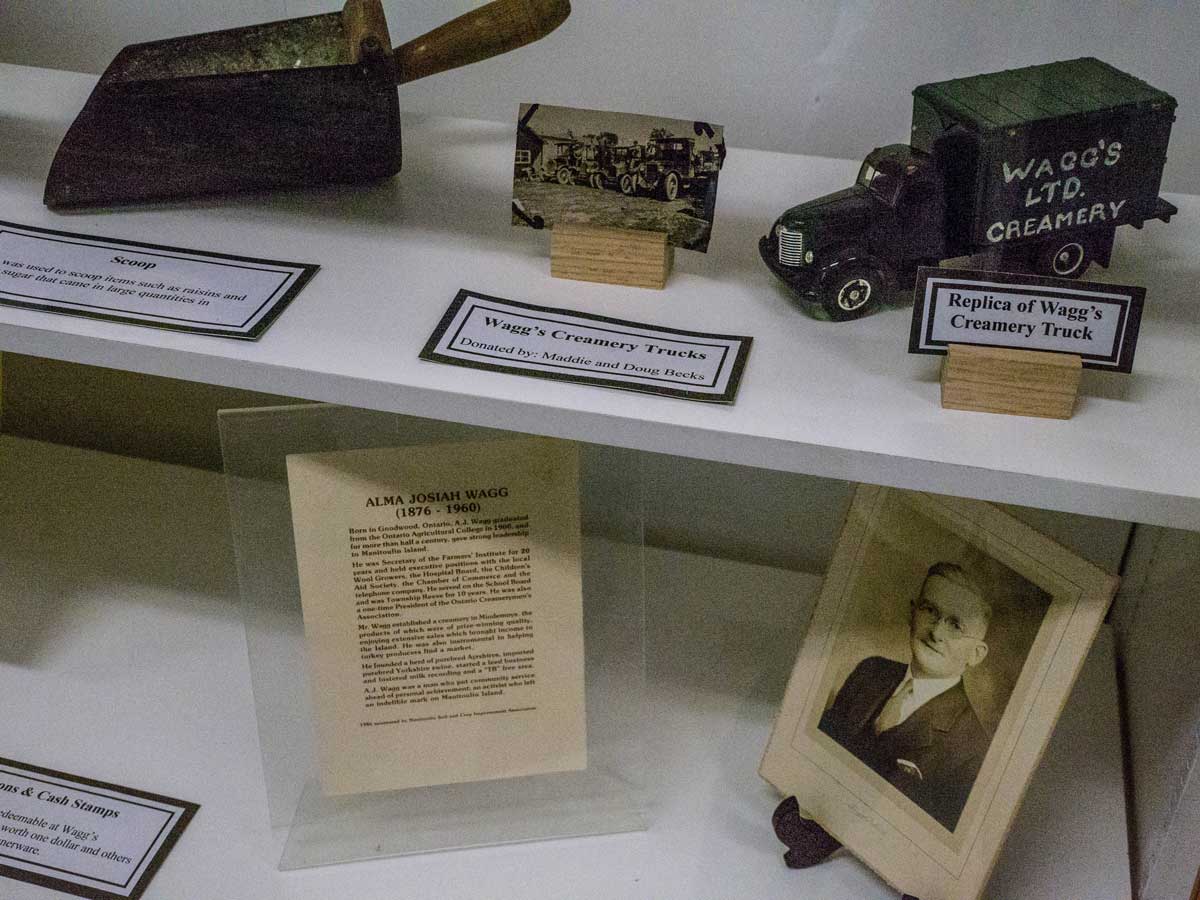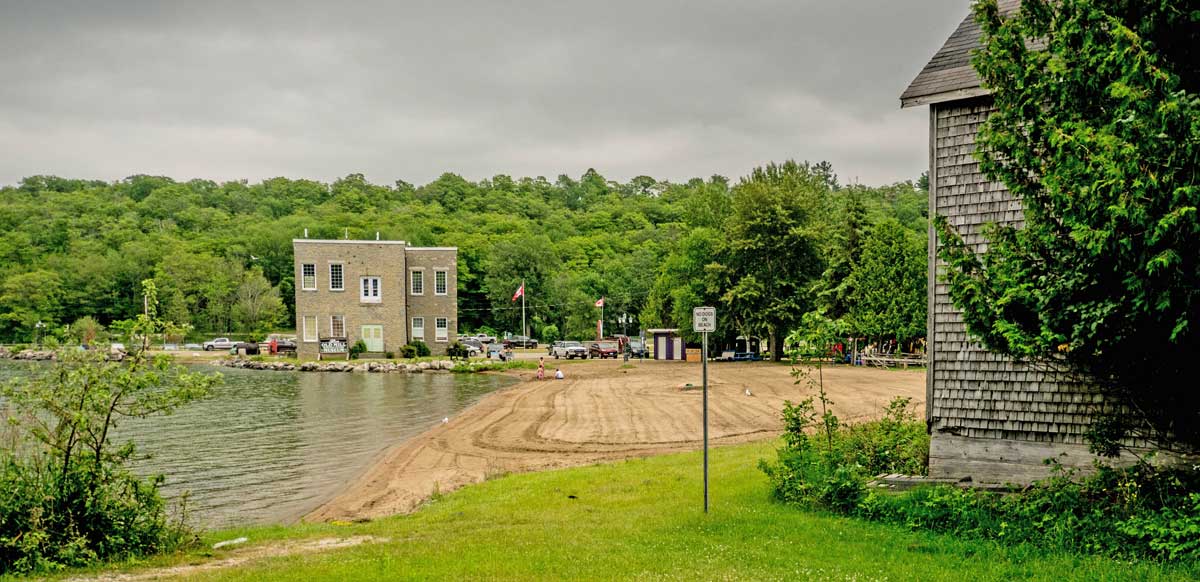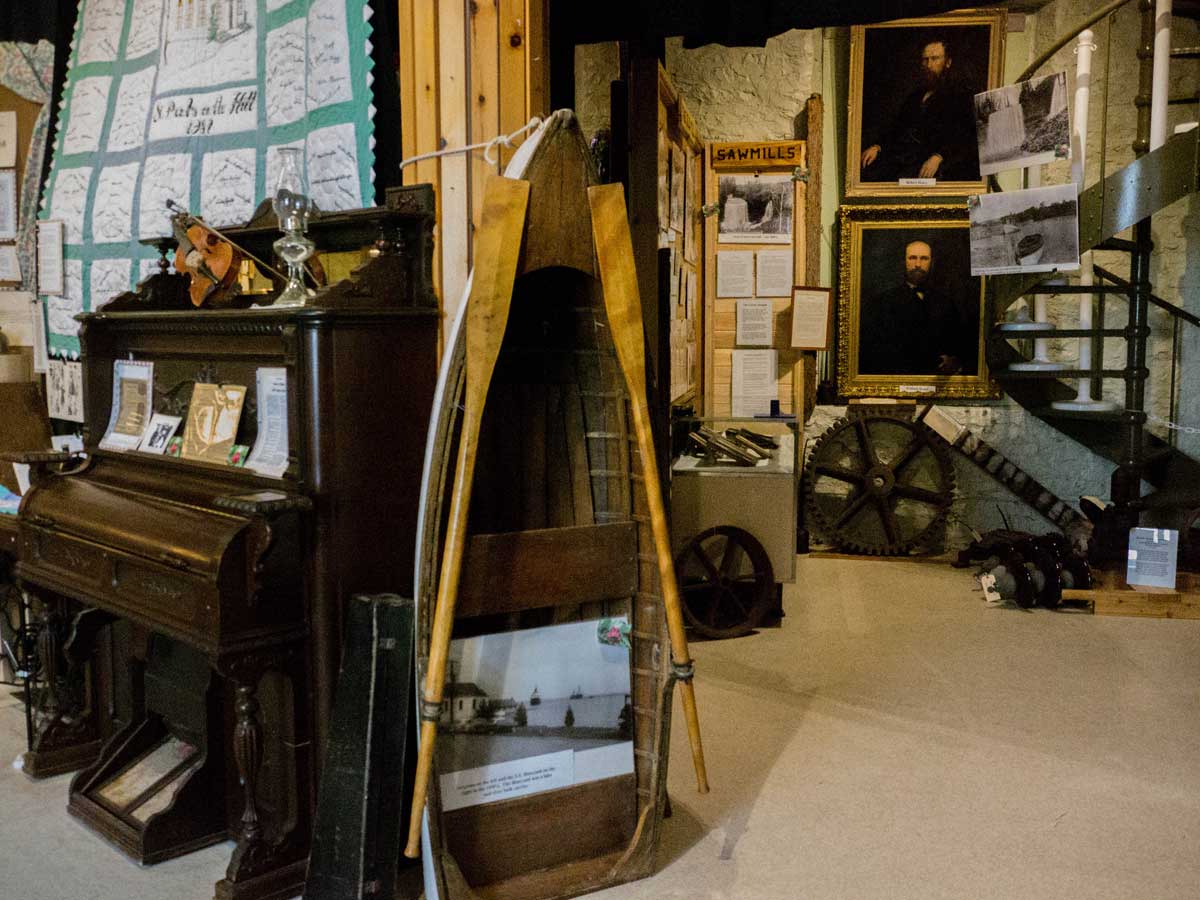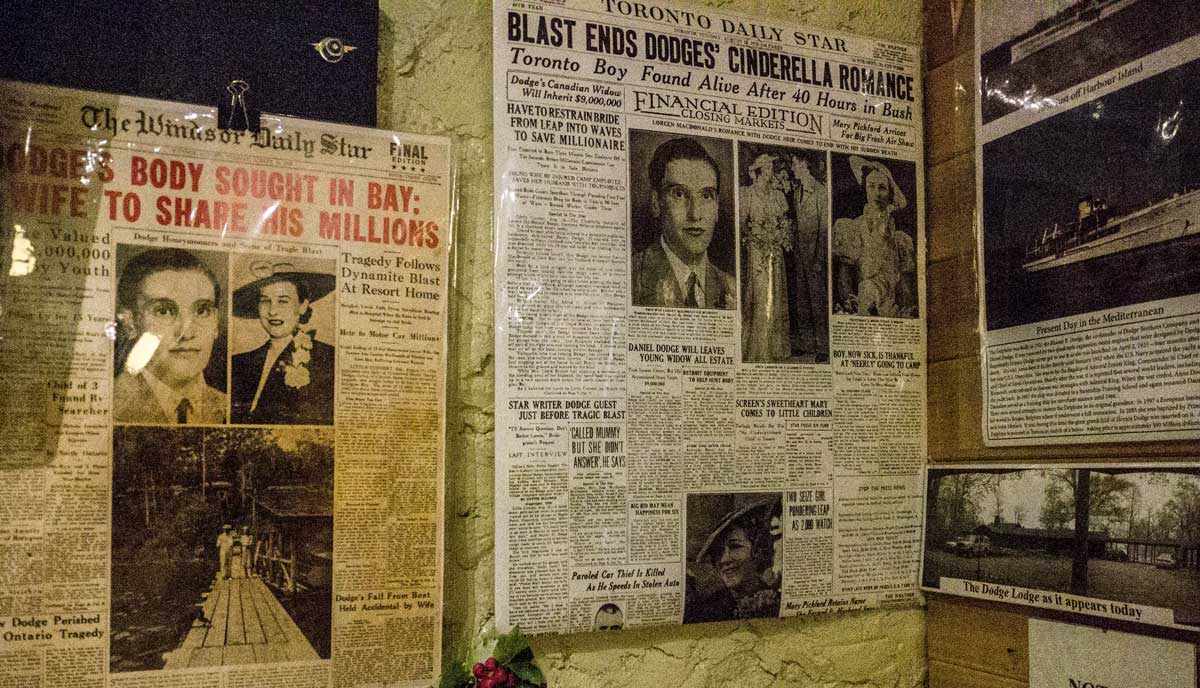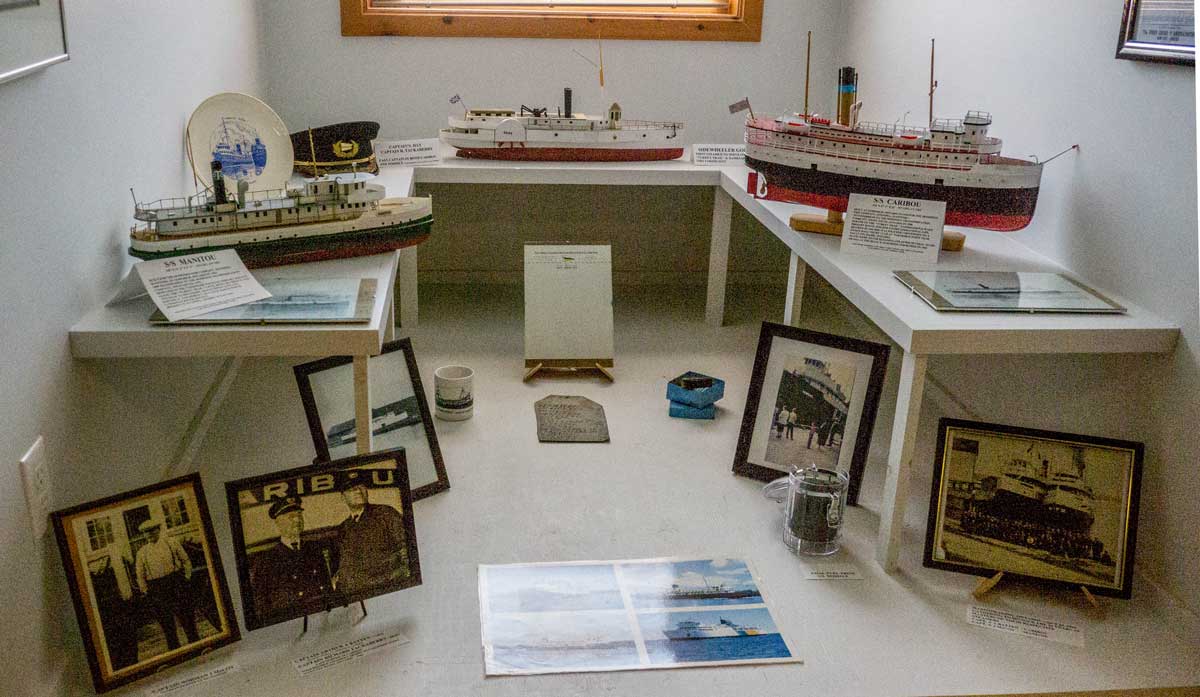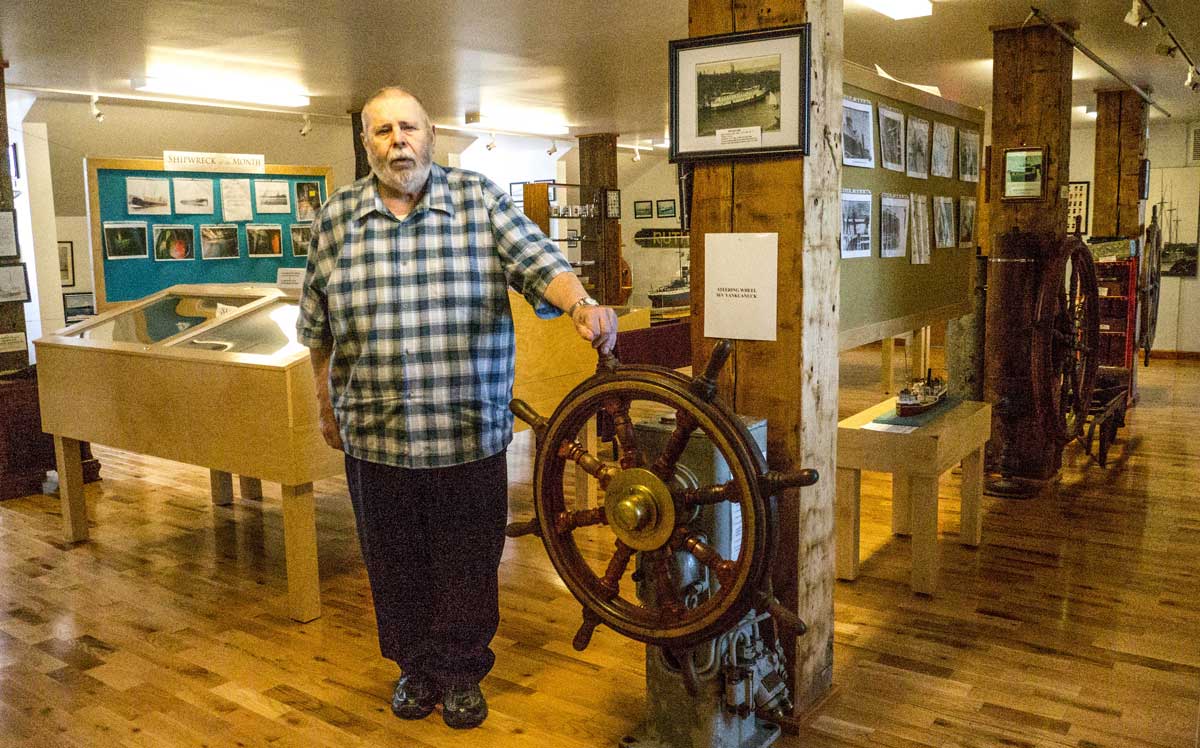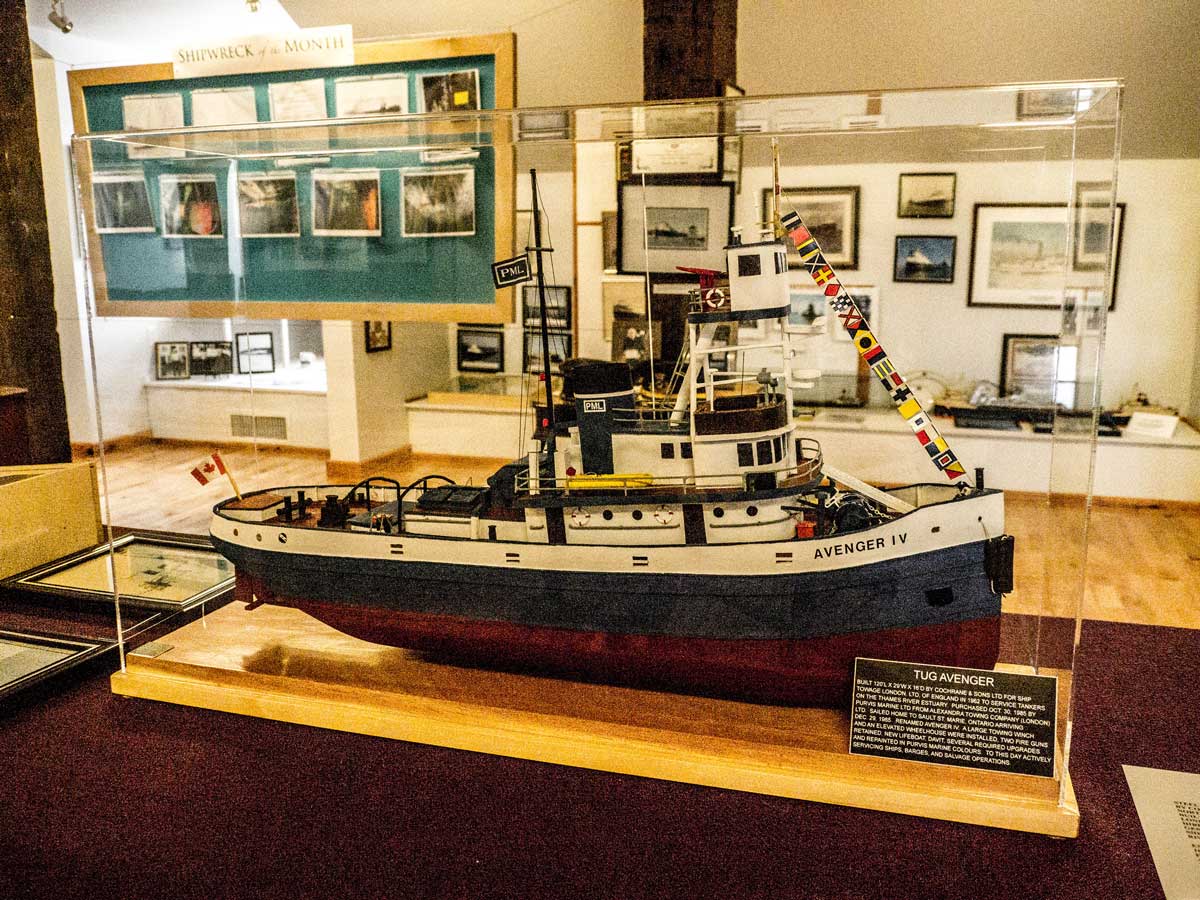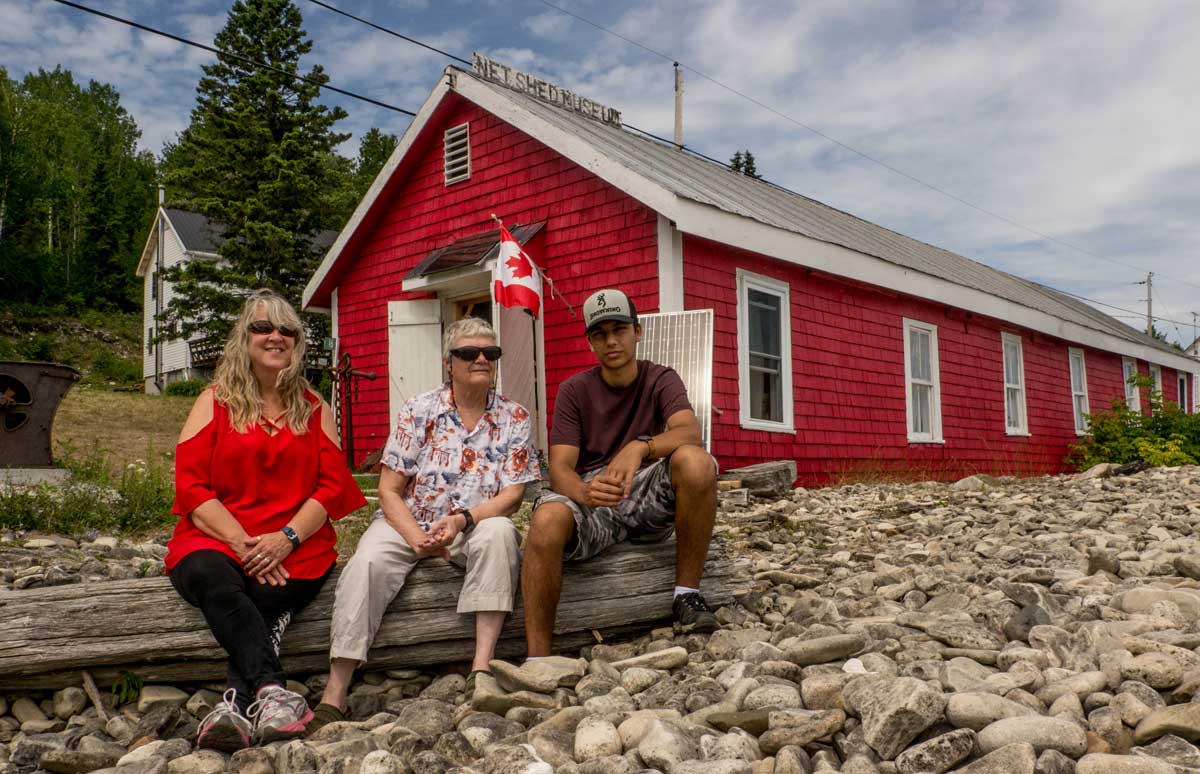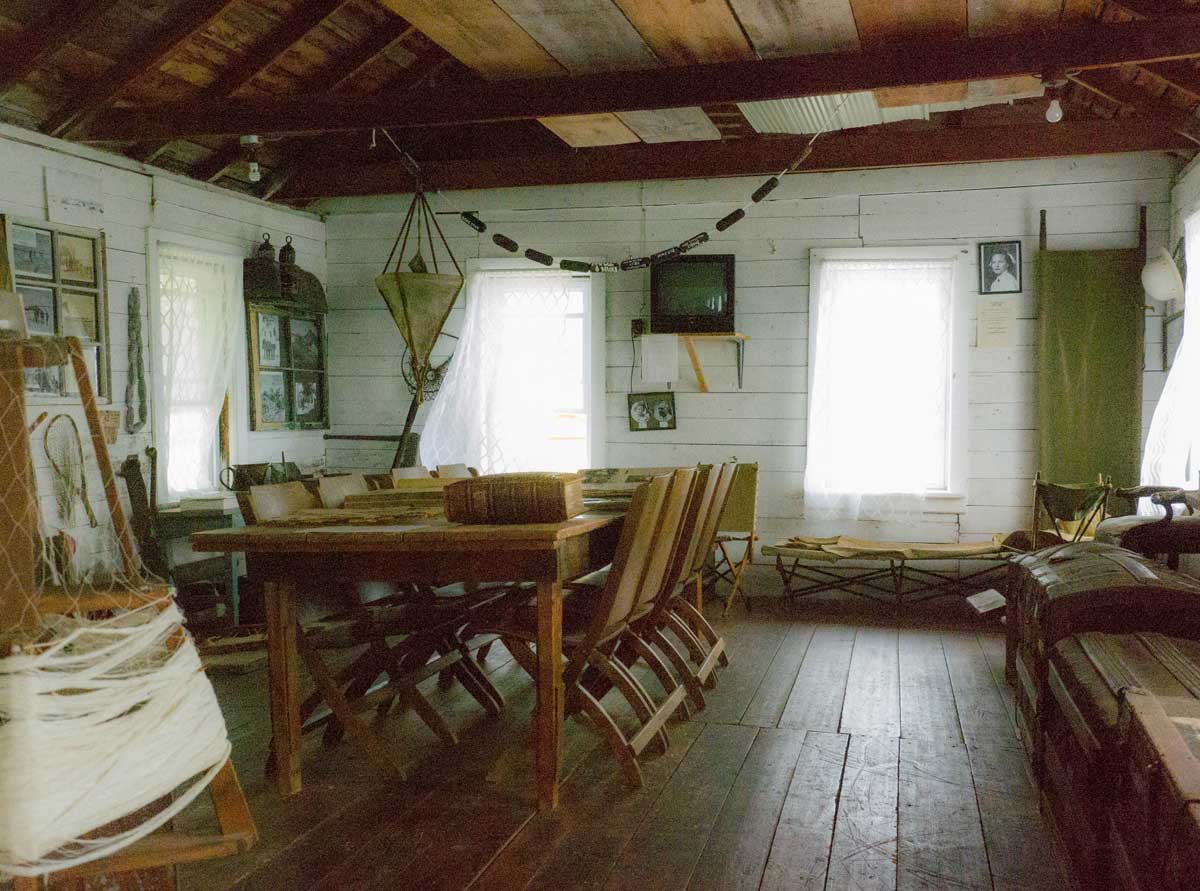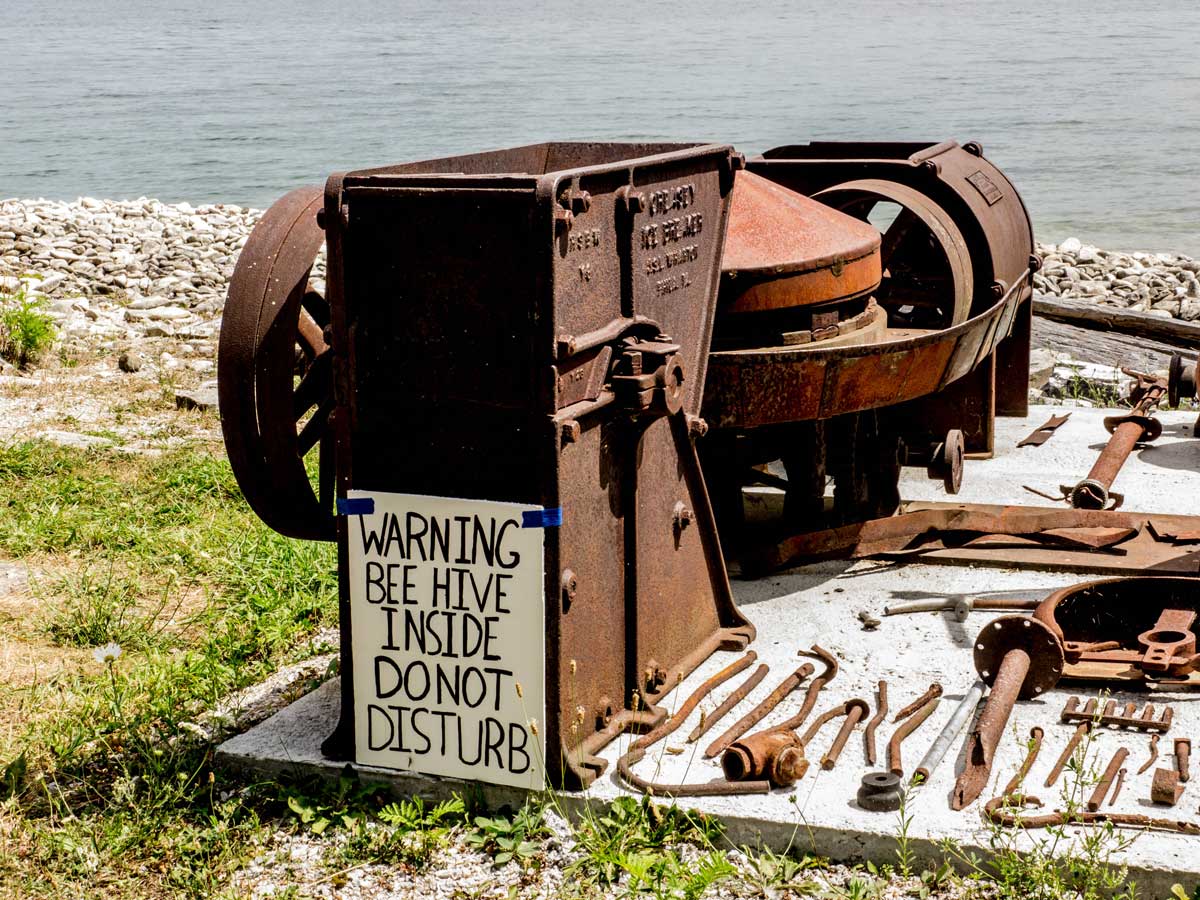The consuming passions of Doug Smith
Manitoulin Transport founder finds Gore Bay the best place to be
Nestled between two high, prominent ridges of the Niagara Escarpment on Manitoulin’s northwestern coast and approached down gently sweeping hills, the town of Gore Bay and its namesake V-shaped inlet slowly reveal their enduring allure on these sheltered shores of the North Channel of Lake Huron.
Incorporated in 1890, Gore Bay’s development had proceeded quickly after the Treaty of 1862 opened the Island to settlement. Homes, stores, hotels, a blacksmith, liveries, sawmills and receiving docks for the steamships that brought passengers, mail and supplies and took lumber and fish to southern markets were established – at the turn of the twentieth century, the growing settlement was a boomtown of industry.
Enterprise built this town. When Fred Smith arrived here in 1898 at the age of 23, leaving his parents and siblings behind in eastern Ontario, Gore Bay was prospering and the young entrepreneur saw it as full of opportunity. Fred immediately started a creamery on the waterfront with local businessmen, and Fred’s brother William arrived a year later, at age 15, to help out. After the great fire of 1908, the brothers took over a general store that became Smith Brothers’ General Merchants, for decades selling everything from groceries and bulk supplies to clothing, hats and footwear for the whole family, right on the main street.
It was a series of prescient business acquisitions, from the Merchants’ Dock Company and the creamery to the general store in the 1920s that propelled Fred and William’s retail business into wholesale by the 1950s. Wholesaling became the means of expansion for Fred’s son, R.W. ‘Bill’ Smith, in the 1920s and for Bill’s son, Douglas, who joined his father’s business in 1955 after becoming disillusioned with a budding banking career in Toronto. By 1960, Doug Smith had founded Manitoulin Transport, now the most extensive transportation network in North America, still headquartered in Gore Bay sixty years on.
“When I started Manitoulin Transport, the head of some big accounting firm told me I didn’t have a chance,” smiles the tall, slender and soft-spoken businessman sitting across the table in a wooly plaid shirt. “It was a struggle, sure.”
“When I started Manitoulin Transport, the head of some big accounting firm told me I didn’t have a chance,”
The company continuously had to adapt in very challenging environments for transportation. When their wholesale grocery trade began to flourish in the 50s – customers included every commercial outlet on the Island and in Killarney, Espanola, Whitefish Falls and Cockburn Island – they “had to” slash their competition. National Grocers, a big supplier that brought produce to the Island as well as groceries was cutting into the Smiths’ business.
To compete, Doug Smith bought a Ford F-900 truck in 1957, custom built and insulated to transport perishables – the first of many transport innovations pioneered by him — and began driving down to Toronto’s Ontario Food Terminal, heading back north overnight with produce fresher than National Grocers’. Upon delivery in Gore Bay, the truck would be loaded with fresh-killed frozen turkeys from the Manitoulin Turkey Co-Operative and driven to Toronto’s Royal York Hotel and Eaton’s department store restaurants. After the acquisition of local Hill’s Transport got them a couple of trucks and a Class A license for the Toronto-Manitoulin Island run in 1960, the new company, Manitoulin Transport, was born.
The myriad rules imposed by the Ontario Highway Transport Board that regulated the trucking industry until 1988 required endless applications, hearings and witnesses to prove the ‘necessity and convenience’ of each route. “When trucking was de-regulated, the competition was so fierce, many companies couldn’t survive and chose to sell,” says Mr. Smith. “We chose to expand: we acquired more terminals and partnered with more brokers and owner-operators, lessening the competition for our services.”
Manitoulin Transport is now within the Manitoulin Group of Companies – whose CEO is Doug Smith’s son, Gord – encompassing global transportation services worldwide from supply chain management, warehousing, forwarding, customs brokerage, crating and packaging to time-critical deliveries. Two hundred and fifty employees work in the sprawling Head Office in Gore Bay, 700 tractors (those familiar red trucks with the iconic Manitoulin logo) and 1500 trailers operate out of more than eighty terminals in Canada, with partners and brokers in the U.S., Asia and Europe. In 2008, Doug Smith was invested into the Order of Canada, this country’s highest civilian honour, in recognition of his work as a pioneer and innovator in Canada’s trucking industry.
Two hundred and fifty employees work in the sprawling Head Office in Gore Bay, 700 tractors (those familiar red trucks with the iconic Manitoulin logo) and 1500 trailers operate out of more than eighty terminals in Canada, with partners and brokers in the U.S., Asia and Europe.
Nowadays, Doug Smith has other interests: in addition to his lifelong passion for advancing the family business, the founder of Manitoulin Transport has an abiding love for his hometown of Gore Bay and a keen interest in its wellbeing. At 86 years of age, Doug Smith has not given a thought to retirement, perhaps harkening back to his grandfather Fred’s words: “Keep going til you’re ninety and success will be yours!” He maintains his office at headquarters in town where today he is engaged in reviewing the town’s plans for new docks in the marina and some Swing Bridge replacement ideas sent by a friend; Maureen Dumond, his executive administrative assistant for the last twenty-five years, is his right hand.
The zeal that has driven Doug Smith’s business success also informs his ideas about Gore Bay. “We want the town to survive,” he says. It’s been a long haul from the boom days of lumbering and fishing, milling and shipping, to the Island’s present-day tourism-driven economy. The priorities of the town have changed. “Tourism is a good direction for the Island; small towns have been suffering, tourism is the only thing we’ve got left.”
So, Mr. Smith, who was born and raised here and was only ever away for a couple of years, started to partner with town council on improvement projects. “I love it here,” he says. “It’s a beautiful place, there’s hunting, fishing, and I know most of the people in town.” An avid boater “since age five,” he’s particularly partial to the waterfront and anchors his boat in the marina. “We motored our boat down to Florida one year and I looked around and thought: the North Channel is so much better.”
Ron Lane, former mayor of Gore Bay (2010-2018), remembers partnering with Doug Smith on town projects during his eight-year tenure. “We had a close working relationship,” he says. “We’d talk about the town together; we’d find ways to fund ideas for improvements; we talked about how the town should look good.”
The first partnership rebuilt the marina’s old shower house. The new breakwall that juts into the bay at a cost of $1.4 million was next, and the Community Hall renovation project that transformed the imposing limestone building into a more accessible public space that is also able better to accommodate the Gore Bay Theatre’s award-winning annual presentations. The Arena, built after WWII, needed refurbishing. By the time of the town’s 125th anniversary in 2015, many of the town’s historical exteriors had been restored, the main street and the waterfront spruced up. The town’s prized boardwalk was rebuilt and extended; two walking trails were established on the East Bluff with spectacular views of the town across the bay.
“I love it here,” he says. “It’s a beautiful place, there’s hunting, fishing, and I know most of the people in town.” An avid boater “since age five,” he’s particularly partial to the waterfront and anchors his boat in the marina. “We motored our boat down to Florida one year and I looked around and thought: the North Channel is so much better.”
“Doug never wants credit,” says the former mayor. “The only time he gave in was allowing his name to appear on a plaque at the breakwall. His support has helped tremendously to beautify the town; it’s not just about beauty but also about having a working town with attractions and facilities for residents, visitors and the young families who move here to work at Manitoulin Transport, too, our biggest employer.”
The Smith Family Foundation supports the communities of Manitoulin and Northern Ontario with donations to the Gore Bay health centre, the Fish and Game Club, to charitable organizations and for a future fitness centre in the town. More recently, there are discussions about new park space on the waterfront, new tennis courts, expansion of the marina and last year a splash pad and playground were installed by the boardwalk.
“Doug is a numbers guy,” adds Mr. Lane. “He thinks long-term in his projects – twenty, fifty years from now – planning for the future, how to keep the town viable, a great place to live. He looks at what services are lacking; he’s a philanthropist with a sense of importance about Gore Bay. We’re very lucky to have him.”
“I first played in a band in 1947,” says Mr. Smith, musician. “It was at the annual Sailors’ Ball for workers on the Great Lakes. A band from Wiky was going to play, but there was a big storm, they didn’t make it so I played in the replacement band. I was fourteen.” Doug Smith, on clarinet, and Bob Wiseman, on trumpet, started the Manitoulin Swing Band in 1948 and played dances until 1965: “1948 to 1965 we had sheet music, after 1965 the sheet music wore out and the band had to learn to play by ear.”
Recently, the Swing Band, with additional players, has performed locally, such as at last summer’s opening of Doug Smith’s newly acquired and refurbished resort, stunningly positioned below the East Bluff. The old lodge, a classic of its era but sadly neglected, had been up for sale since 2016. “I wanted to maintain the resort that I’d known since I was a child,” explains the clearly sentimental buyer, who has renamed it the Inn at Gore Bay.
If a beautiful old town property is at risk of losing its longtime character, its old-fashioned appeal, Mr. Smith might very well decide to buy it, out of respect.
www.gorebay.ca; also on Facebook
‘The Early Years of Gore Bay,’ by John McQuarrie, is available at Gore Bay’s two pharmacies and at the Expositor Bookstore.
www.manitoulintransport.com
‘Manitoulin: A Canadian Trucking Trademark,’ by Josephine Griffith, a detailed history of the Smith family businesses and of early regional transportation, is available in the Gore Bay library.
Article by
